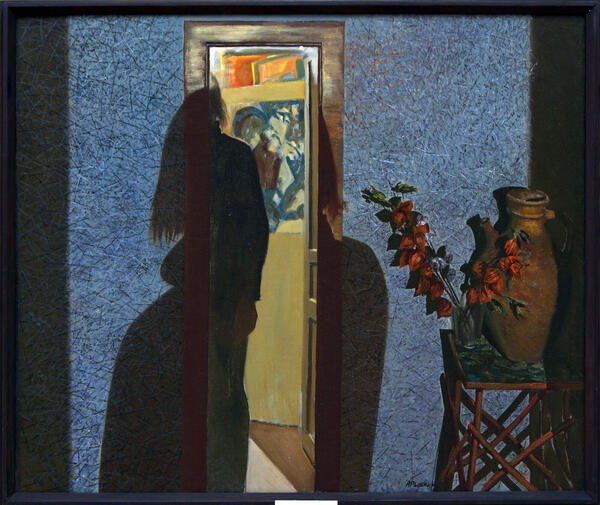Anatoly Petrovich Rybkin is one of the few artists who, despite having settled in the cultural center of the country, still maintains close ties with his homeland, and this makes him a painter of both Saint Petersburg and Chuvashia. He was born in the village of Vurmankasy, Mariinsko-Posadsky district. He graduated from the design department of the Cheboksary Art College and the painting department of the Repin Institute of Painting, Sculpture and Architecture. Rybkin also worked on the design of the Moscow 1980 Summer Olympics. He traveled a lot, visiting the Astrakhan steppes, Chukotka, Krasnoyarsk, the North Caucasus, France, Cuba, India, and Tunisia. Despite his constant craving for exploring, feeling and experiencing the unknown, his homeland invariably remains the main theme in his art — the landscapes of native lands, portraits of close people and countrymen, and depictions of things that evoke touching memories.
In Rybkin’s paintings, even the simplest objects acquire symbolic meaning. For the artist, everything around him is there for a reason, and every detail in his works is endowed with associations and plays its special role in creating the general impression. The artist’s approach to coloring is meticulous: a number of Rybkin’s works, albeit with a rather limited palette, are still very expressive due to his oil painting technique and the dynamics of the colors.
For those who turn to this genre, a self-portrait can hold a variety of meanings: from being a place for experiments and a kind of visual diary to answering the eternal question “Who am I?”. It is not easy to find and grasp the image, which seems to be constantly slipping away. This is true for this picture as well, where there is no familiar human face or eyes that reflect the inner world of the character. There is only a shadow on the wall and a reflection in the mirror — a dark man’s figure illuminated by the bright light streaming from the open door. The objects surrounding the artist seem to be telling much more about him: paintings on the shelves in his studio, some old things and a calendar with the image of the Mother of God attached to the door, and the objects in his numerous philosophical still lifes. Rybkin’s interest in the difficult stories of the things and the people who handled them, light of faith, and striving for self-perfection — all this largely contributes to the artist’s image.
In Rybkin’s paintings, even the simplest objects acquire symbolic meaning. For the artist, everything around him is there for a reason, and every detail in his works is endowed with associations and plays its special role in creating the general impression. The artist’s approach to coloring is meticulous: a number of Rybkin’s works, albeit with a rather limited palette, are still very expressive due to his oil painting technique and the dynamics of the colors.
For those who turn to this genre, a self-portrait can hold a variety of meanings: from being a place for experiments and a kind of visual diary to answering the eternal question “Who am I?”. It is not easy to find and grasp the image, which seems to be constantly slipping away. This is true for this picture as well, where there is no familiar human face or eyes that reflect the inner world of the character. There is only a shadow on the wall and a reflection in the mirror — a dark man’s figure illuminated by the bright light streaming from the open door. The objects surrounding the artist seem to be telling much more about him: paintings on the shelves in his studio, some old things and a calendar with the image of the Mother of God attached to the door, and the objects in his numerous philosophical still lifes. Rybkin’s interest in the difficult stories of the things and the people who handled them, light of faith, and striving for self-perfection — all this largely contributes to the artist’s image.



